Utah’s landscape stands as a testament to nature’s artistic prowess, shaped by
millions of years of wind, water, and geological forces. From towering sandstone
arches to deep canyon systems and otherworldly rock formations, the state offers
some of the most spectacular hiking destinations in North America.
These 20 geological landmarks not only provide breathtaking views but also tell the
story of Earth’s ancient past through their layered rocks and unique formations.
Whether you’re an experienced hiker or just beginning to explore the outdoors, these
natural wonders offer adventures that will leave you in awe of our planet’s raw
beauty.
Delicate Arch, Arches National Park
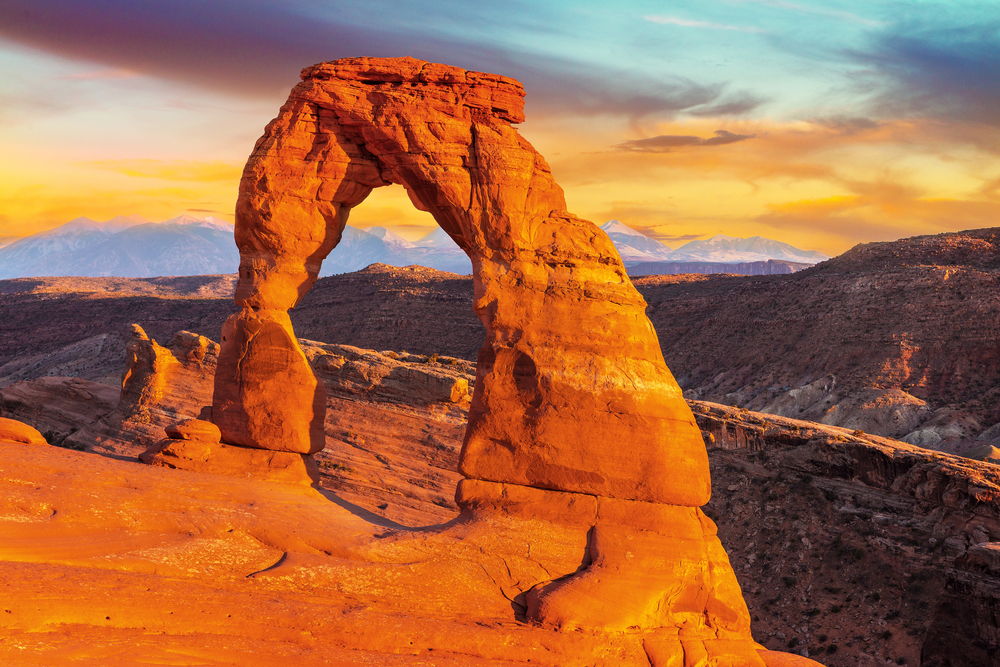
Standing proudly at the edge of a sandstone bowl, this 65-foot-tall freestanding arch
has become Utah’s most recognizable landmark. The 3-mile round-trip trail to reach
it gains 480 feet in elevation and crosses open slick rock with exposure to sun and
wind.
The best times for hiking are early morning or late afternoon when the lighting
makes the red rock glow and temperatures are more moderate. You’ll find several
natural stone benches near the arch, which are perfect for resting and soaking in the
spectacular views of the La Sal Mountains in the distance.
Angels Landing, Zion National Park
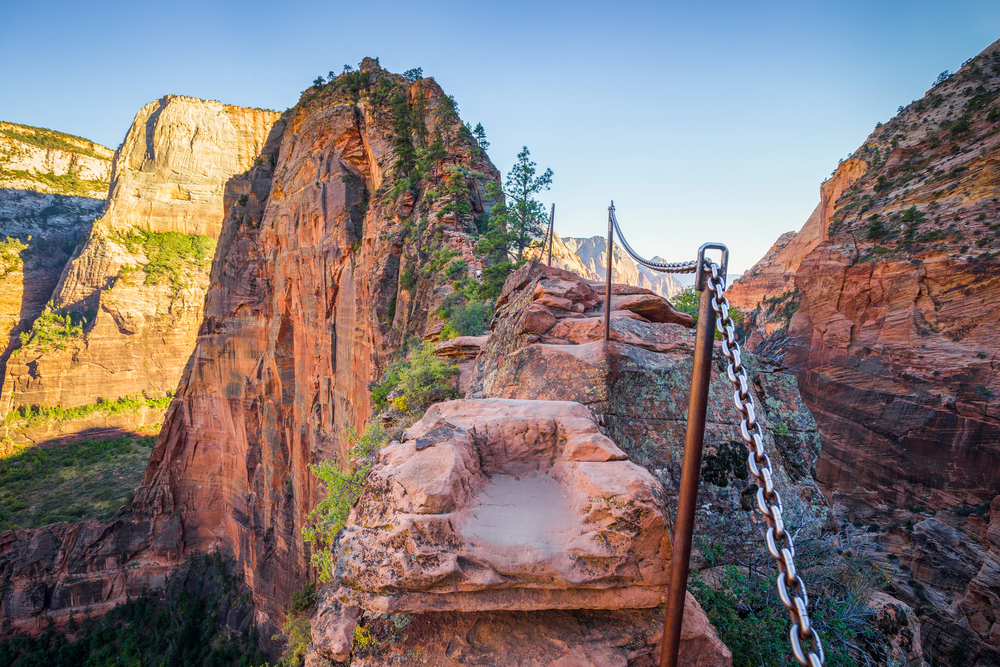
This iconic knife-edge ridge rises 1,500 feet above the Virgin River, offering one of
the most thrilling and rewarding hikes in the Southwest. The 5.4-mile round-trip trail
includes steep switchbacks, exposed edges protected by chains, and stunning views
of Zion Canyon.
Starting early is crucial, not just to beat the crowds but also to avoid the intense afternoon heat bouncing off the sandstone walls. The final half-mile traverse along the spine requires a head for heights but rewards hikers with unparalleled 360-degree views.
Like Travel Pug’s content? Follow us on MSN.
Landscape Arch, Arches National Park
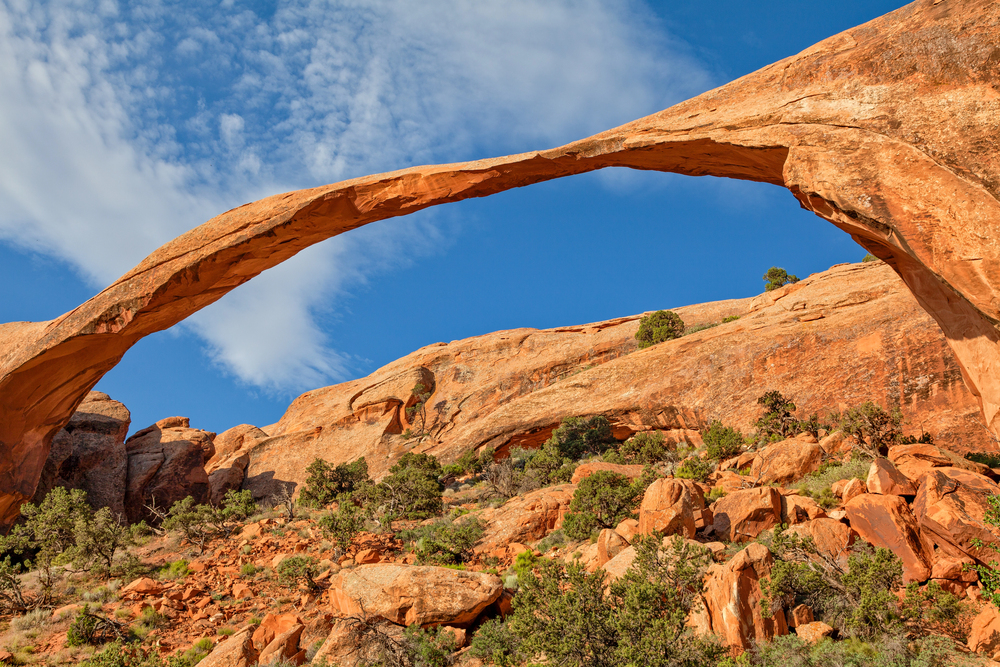
Stretching an impressive 306 feet, this delicate span stands as the longest natural
arch in North America. The relatively easy 1.6-mile round-trip trail winds through fins
and rock gardens, offering excellent opportunities to spot desert wildlife.
Several dramatic rockfalls in the 1990s remind visitors of the arch’s fragility and ongoing
evolution. The morning light creates stunning photo opportunities as the sun
illuminates the thin ribbon of sandstone.
Goblin Valley State Park
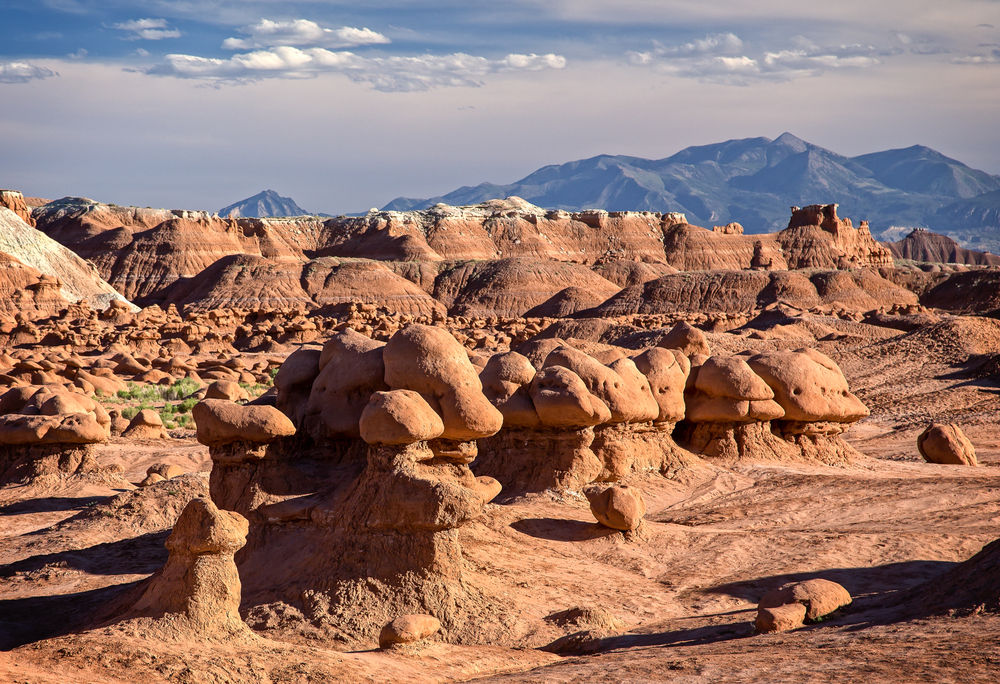
This otherworldly landscape features thousands of mushroom-shaped rock
formations locally known as ‘hoodoos’ or ‘goblins.’ The Valley of Goblins allows free-
range hiking among the formations, making it perfect for families and photographers
seeking unique perspectives.
The best exploration happens during the golden hours when shadows play across the strange shapes and the red rock glows. The park’s relative isolation also makes it an excellent destination for night sky photography.
Natural Bridges National Monument
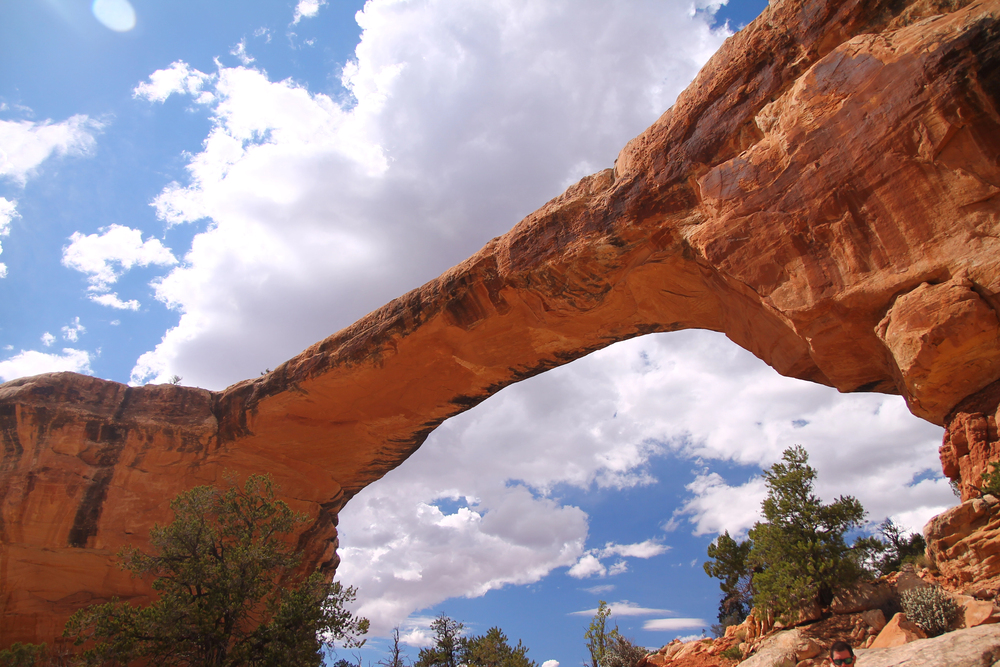
Three majestic natural bridges – Kachina, Owachomo, and Sipapu – showcase
different stages in bridge formation. The 8.6-mile loop trail visiting all three bridges
offers a challenging but rewarding day hike through canyon country.
Each bridge has its own character and lighting conditions, with Owachomo being the most delicate and photographically popular. The monument’s remote location provides some of the darkest night skies in the country, perfect for stargazing after your hike.
Like Travel Pug’s content? Follow us on MSN.
Fisher Towers, Moab
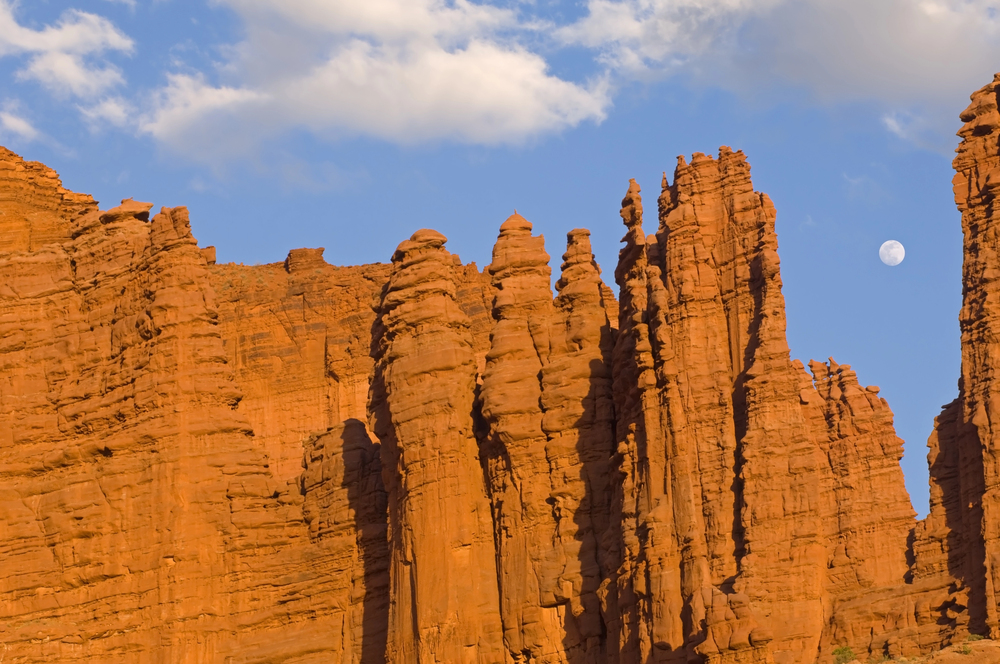
These ancient mudstone towers rise dramatically above the Colorado River, creating
one of the most photographed climbing areas in the Southwest. The 4.4-mile round-
trip trail provides hikers with close-up views of the towers and their resident climbers.
Late afternoon light brings out the deep red colors of the rock and creates dramatic
shadows. The exposed trail requires careful attention in wet conditions but offers
spectacular views of Castle Valley and the La Sal Mountains.
Double Arch, Arches National Park
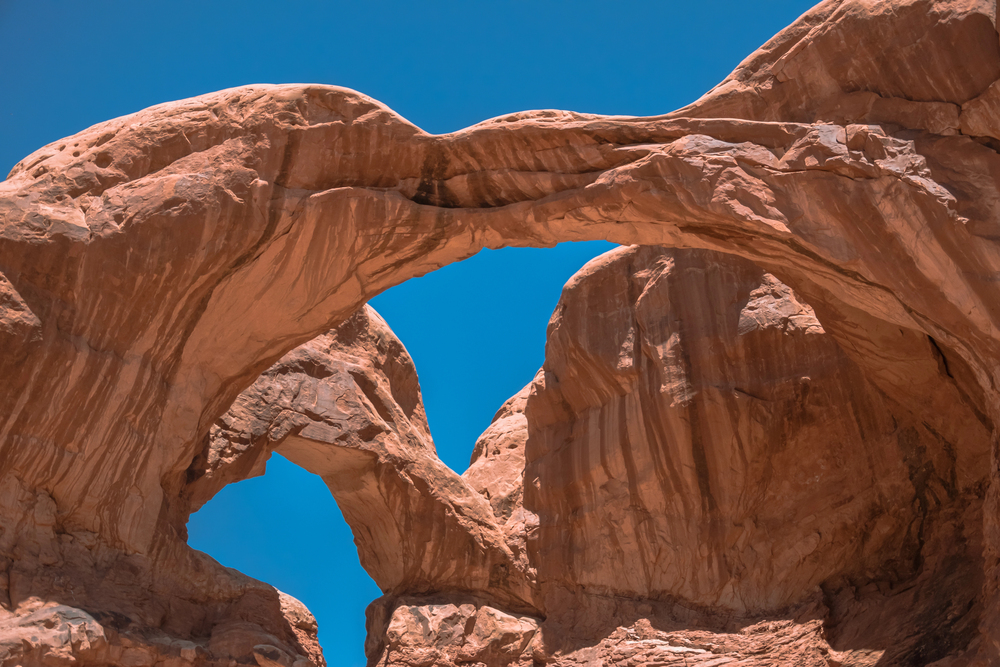
This unique formation features two massive arches sharing the same stone
foundation, creating one of the park’s most impressive sights. The short 0.5-mile
round-trip trail makes this landmark accessible to hikers of all abilities, including
families with young children.
The area under the arches creates a natural amphitheater perfect for photography and contemplation. Movie buffs might recognize the location from the opening scenes of ‘Indiana Jones and the Last Crusade.’
Corona Arch, Moab
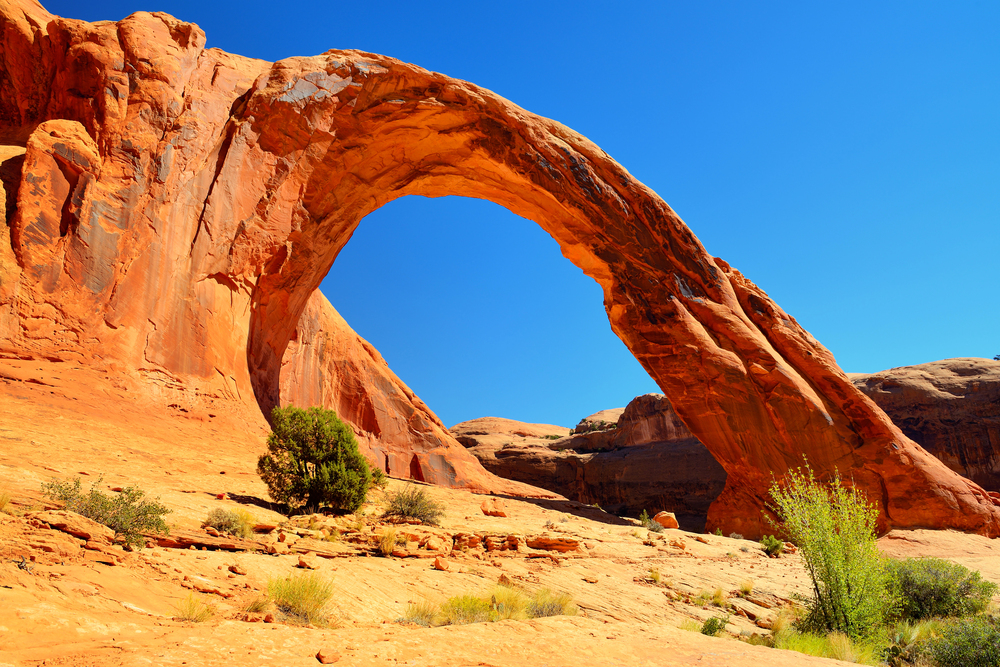
Located outside national park boundaries, this impressive 140-foot-tall arch offers a
less crowded alternative to its more famous cousins. The 3-mile round-trip trail includes some mild exposure and cable-assisted sections, adding excitement to the
hike.
Bowtie Arch, visible along the same trail, provides an excellent bonus destination. The late afternoon sun creates perfect lighting conditions for photography, with the arch framing the Colorado River canyon beyond.
Like Travel Pug’s content? Follow us on MSN.
The Wave, Vermilion Cliffs
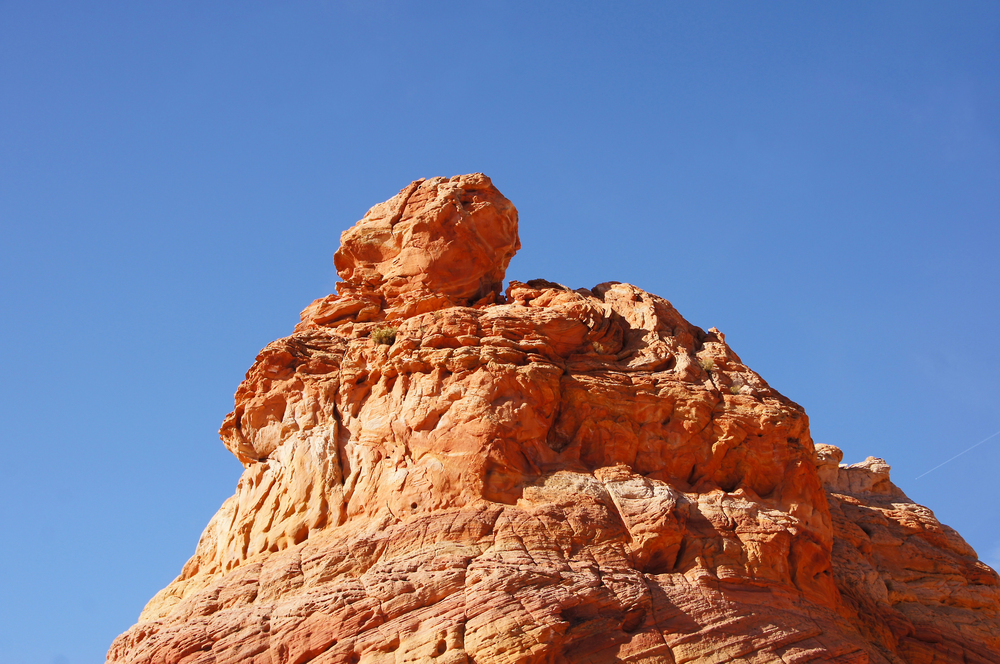
This mesmerizing sandstone formation features swirling bands of red, pink, and
white rock that appear to flow like water. Access requires winning a highly
competitive permit lottery and following unmarked routes across the desert.
The 6.4- mile round-trip hike demands good navigation skills and preparation for extreme desert conditions. The midday sun reveals the most vibrant colors in the rock, though photography is excellent throughout the day.
Nine Mile Canyon

Despite its name, this canyon stretches for 40 miles and contains the highest
concentration of rock art in North America. The main road follows the canyon bottom,
with numerous pullouts for accessing short hiking trails to pictograph and petroglyph
panels.
Spring and fall offer the most comfortable hiking conditions and the best lighting for viewing ancient artwork. The canyon’s relative obscurity means you’ll often have these remarkable sites to yourself.
Little Wild Horse Canyon
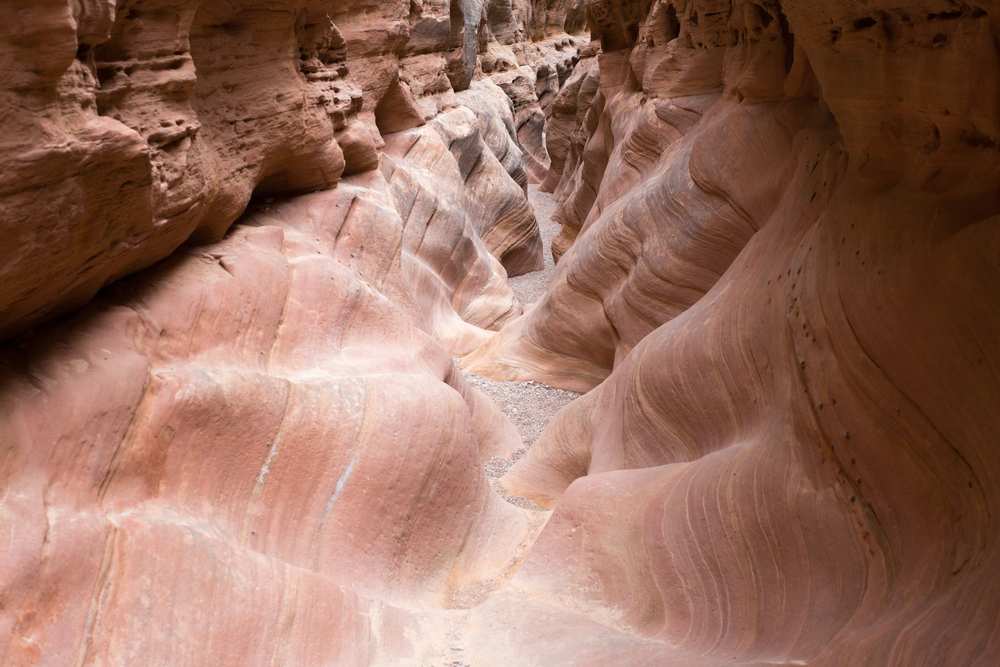
This classic slot canyon provides an excellent introduction to canyon hiking with its
narrow passages and stunning rock formations. The 8-mile loop combining Little
Wild Horse and Bell Canyons offers varied terrain and spectacular geology.
The narrows provide welcome shade during hot days, though flash flood awareness is
essential. The canyon’s proximity to Goblin Valley State Park makes it perfect for a
combination adventure.
Like Travel Pug’s content? Follow us on MSN.
Cedar Breaks National Monument
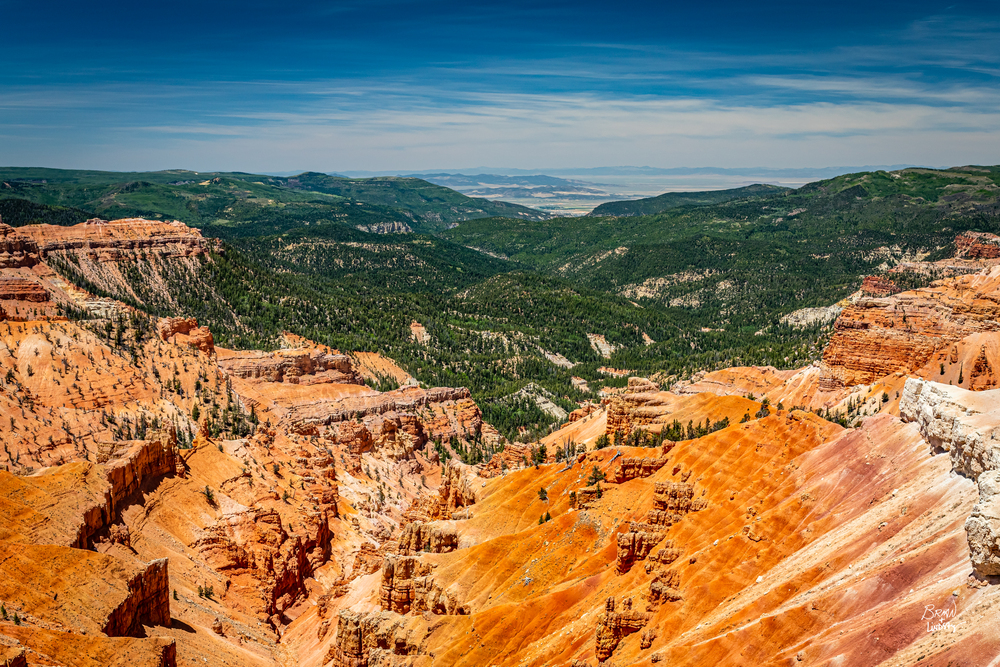
This natural amphitheater drops 2,000 feet into a bowl of eroded red and orange
rock formations. The high elevation (10,000 feet) provides relief from summer heat
and features stunning wildflower displays in July and August.
The 4-mile Spectra Point/Ramparts Trail offers the best views of the amphitheater and ancient bristlecone pines. Morning visits often provide opportunities to see the amphitheater filled with clouds before they burn off.
Bryce Canyon Amphitheater
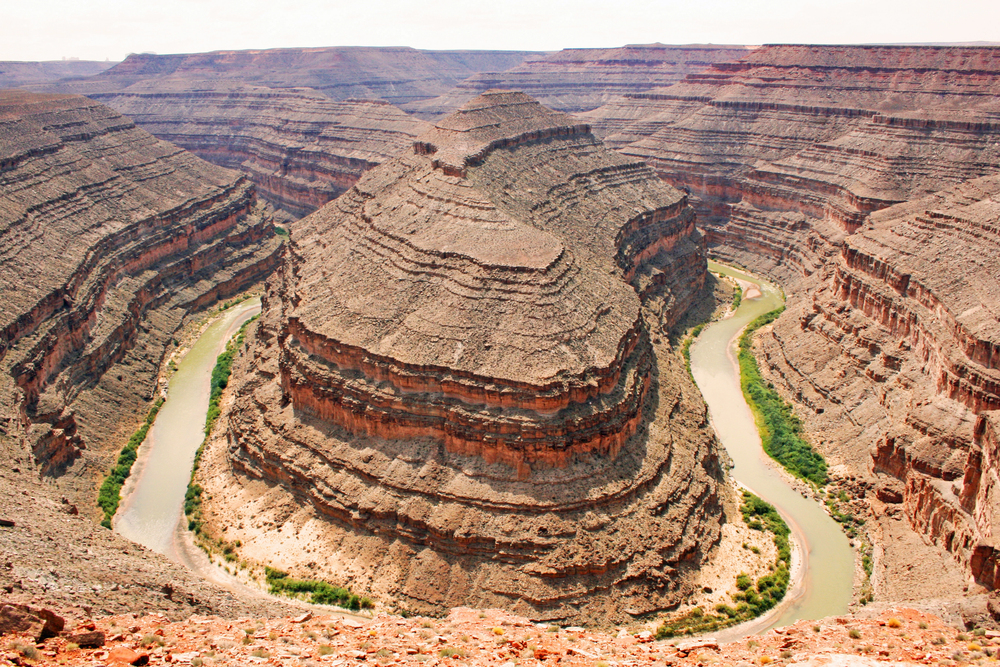
The heart of Bryce Canyon National Park showcases the world’s largest collection of
hoodoos in a natural amphitheater setting. The 3-mile Queens Garden/Navajo Loop
combination trail takes you down among these remarkable formations.
Early morning light creates the most dramatic shadows and colors among the hoodoos, while full moon nights offer surreal hiking experiences. Winter adds another dimension, with snow contrasting against the red rock.
Goosenecks State Park
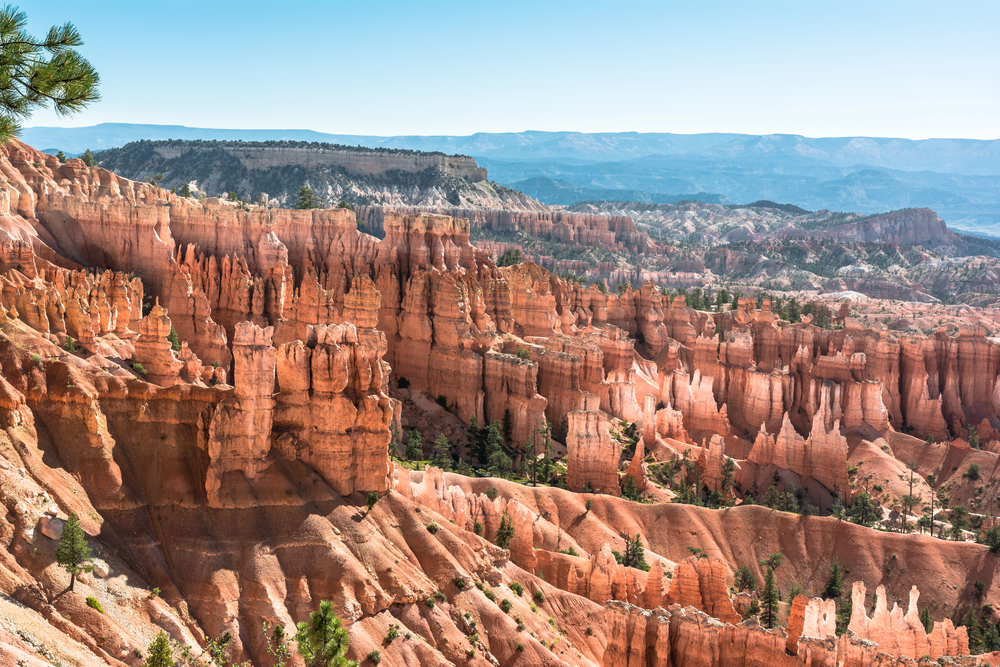
The San Juan River carved these dramatic entrenched meanders, making three tight
turns across 6 miles while traveling only 1.5 miles as the crow flies. The rim trails
provide spectacular views of the 1,000-foot-deep canyons and layers of ancient rock.
Sunset and sunrise create dramatic lighting conditions as shadows play across the
deep canyons. The park’s remote location ensures minimal light pollution for
excellent stargazing opportunities.
Like Travel Pug’s content? Follow us on MSN.
Devils Garden, Grand Staircase-Escalante
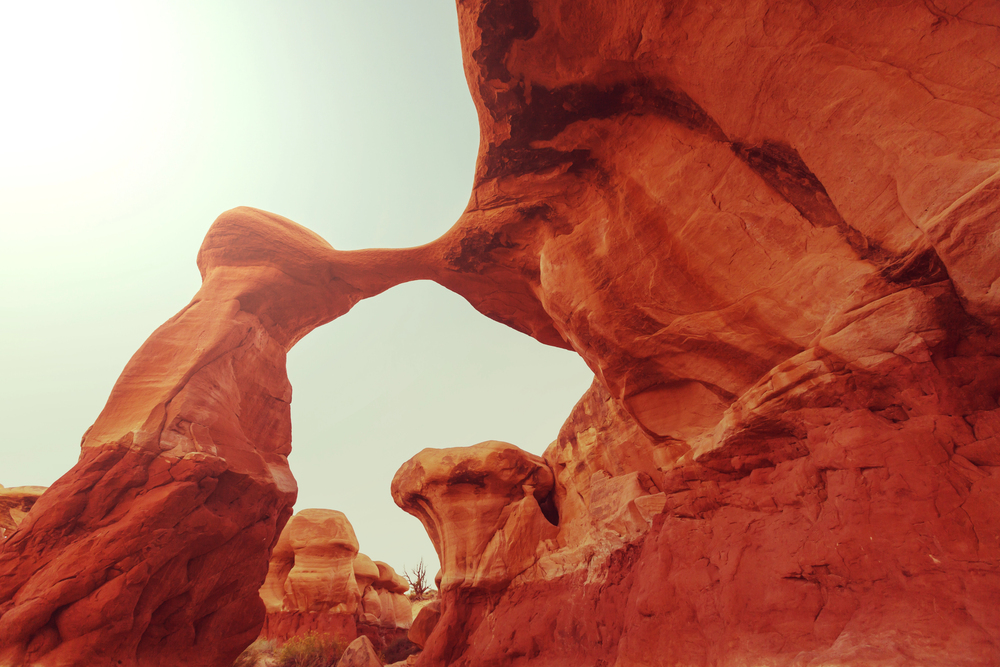
Not to be confused with its namesake in Arches, this collection of hoodoos and fins
offers excellent hiking opportunities without the crowds. The 1.5-mile trail network
allows the exploration of numerous rock formations and natural arches.
Early morning or late afternoon provides the best light for photography and the most
comfortable hiking conditions. The area’s relative isolation requires careful
preparation and navigation skills.
Zebra Slot Canyon
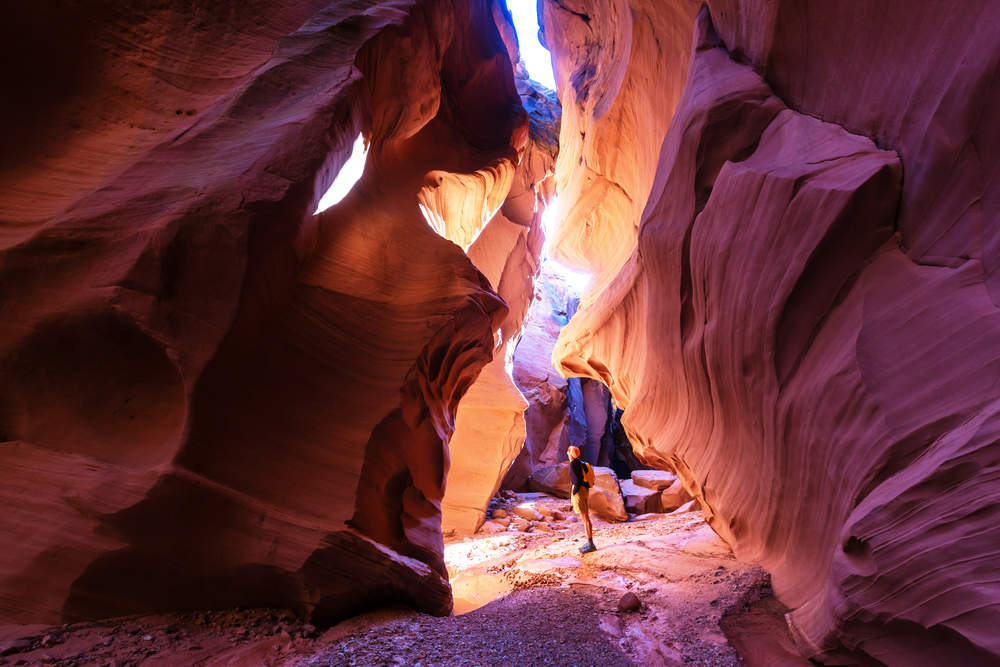
Named for its distinctive striped walls, this narrow canyon offers a unique hiking
experience in the Grand Staircase-Escalante region. The 5.3-mile round-trip hike
requires navigation across the open desert before entering the dramatic slot canyon.
Water often pools in the narrows, requiring wading or swimming depending on
conditions. The striped patterns look most dramatic in reflected light during midday
hours.
Fantasy Canyon
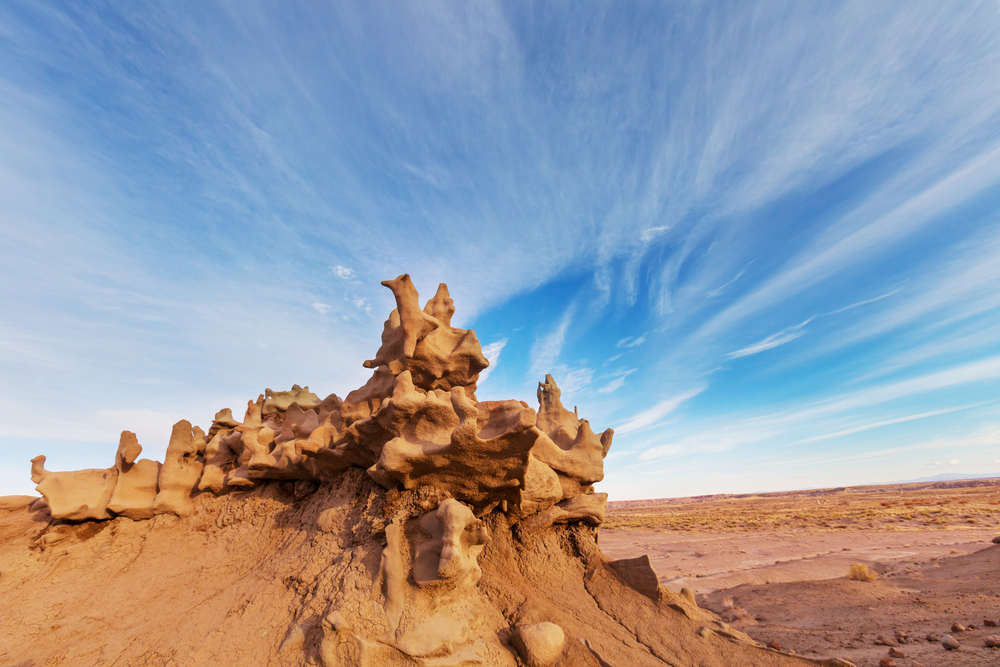
This small but incredibly intricate area features some of Utah’s most delicate and
bizarre rock formations. The short 0.6-mile loop trail winds through a maze of
weathered sandstone features resembling sculptures.
Early morning or late afternoon light brings out the best detail in the formations. The site’s remote location and fragile nature require careful movement and respect for the delicate structures.
Like Travel Pug’s content? Follow us on MSN.
The Needles, Canyonlands National Park
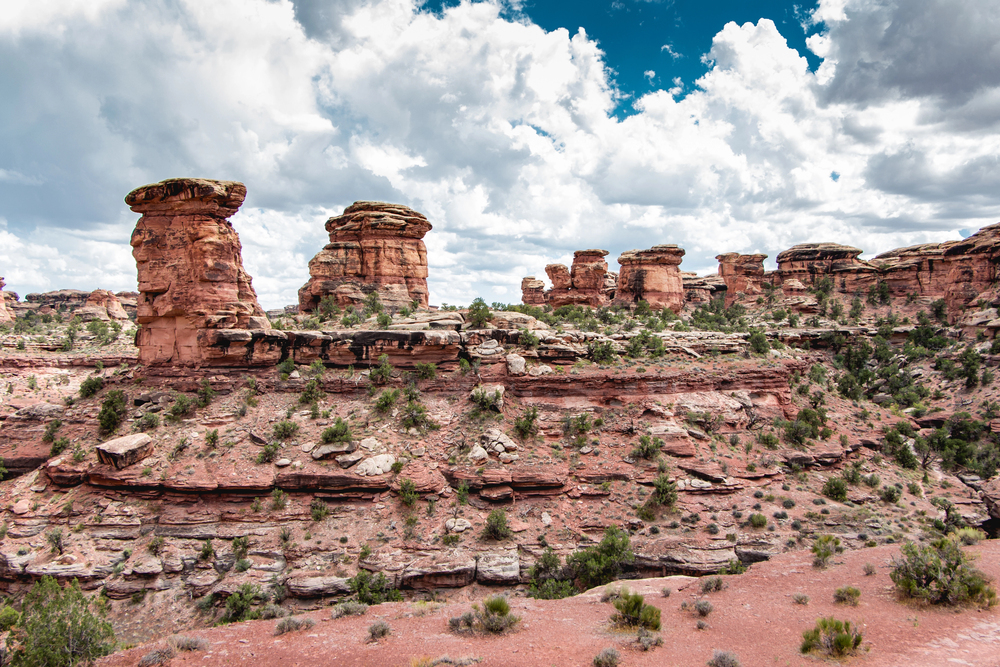
These colorful spires of Cedar Mesa Sandstone create a maze-like landscape
perfect for adventurous hiking. The 7.5-mile Chesler Park Loop offers the best
introduction to the area’s remarkable geology and desert ecology.
Spring and fall provide ideal hiking conditions with moderate temperatures and occasional wildflower displays. The area’s complex trail system rewards multiple visits with new perspectives and discoveries.
Cottonwood Canyon
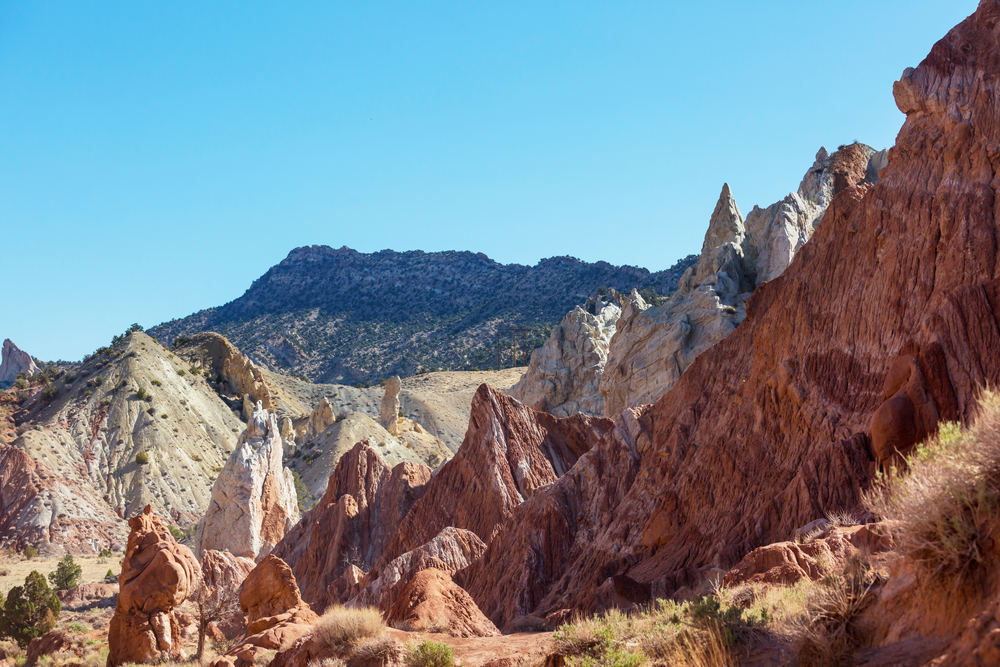
This 46-mile-long canyon cuts through the Grand Staircase-Escalante National
Monument, offering numerous hiking opportunities along its length. The Cottonwood
Narrows provides an accessible 3-mile round-trip hike through colorful canyon walls.
Spring brings desert wildflowers and comfortable hiking temperatures, while fall
colors add another dimension to the scenery. The unpaved road access keeps
crowds minimal, even during peak seasons.
The Subway, Zion National Park
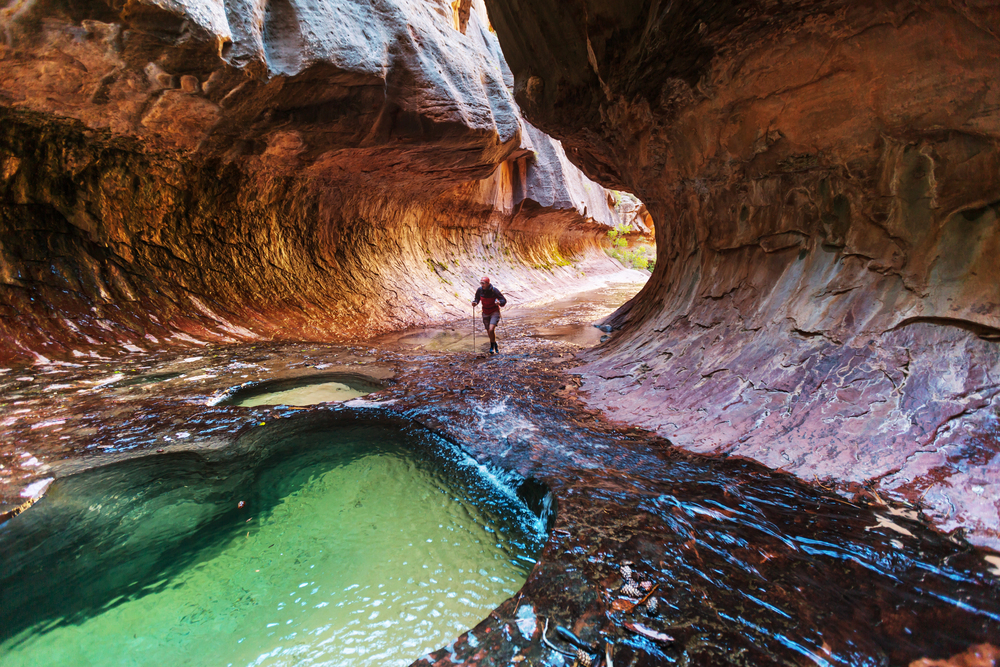
This unique slot canyon features a tunnel-like formation carved by the Left Fork of
North Creek. The strenuous 9-mile round-trip route requires route finding, creek
crossings, and scrambling over boulders.
A permit is required for this popular destination, and planning is essential. The middle of the day provides the best light for photographing the famous emerald pools and curved walls.
Like Travel Pug’s content? Follow us on MSN.
Nature’s Artistic Legacy
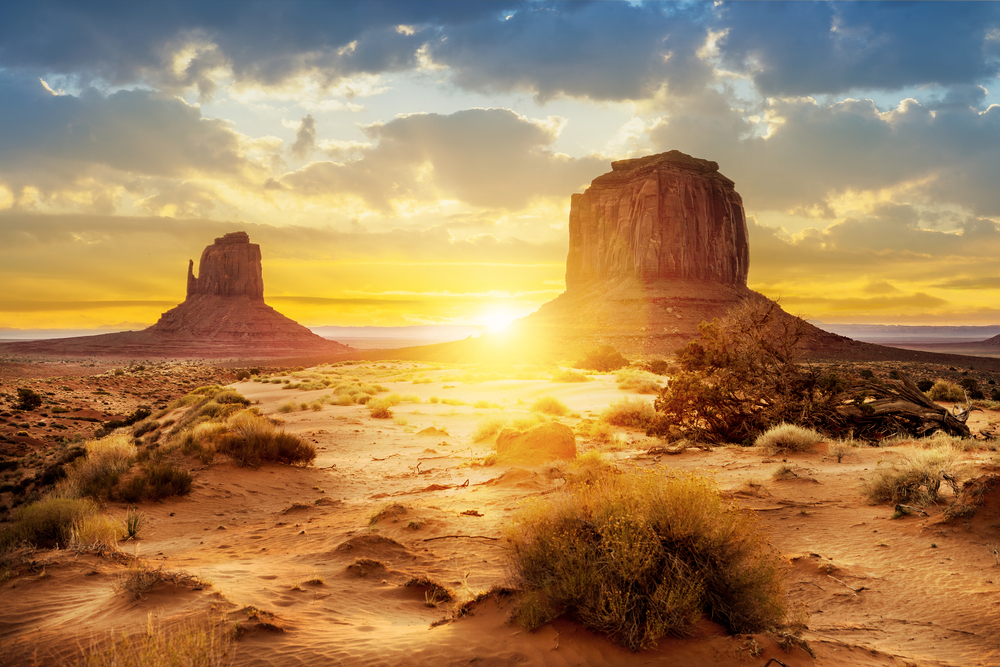
These remarkable geological landmarks represent just a fraction of Utah’s natural
wonders, each telling its own story of time, erosion, and the powerful forces that
shape our planet. When planning your visits, remember that desert hiking requires
careful preparation, including plenty of water, sun protection, and awareness of
weather conditions.
Many of these sites lie in remote areas where self-reliance and navigation skills become essential tools. Take time to learn about each location’s unique geology and history, and always practice Leave No Trace principles to help preserve these treasures for future
generations.
The red rock country of Utah offers endless opportunities for exploration and discovery, inviting you to create your own connections with these remarkable landscapes.
More from Travel Pug

- 15 Dangerous European Cities to Avoid
- 15 Caribbean Islands Where Tourists Keep Getting Scammed
- The 20 Most Fascinating Abandoned Places: A Journey Through Time and Forgotten Spaces
- 15 Hidden Places in the Smithsonian Museums Locals Love: A Guide to Lesser-Known Treasures
- 16 Hidden Florida Beach Towns That Aren’t Overrun with Tourists
Like Travel Pug’s content? Follow us on MSN.
